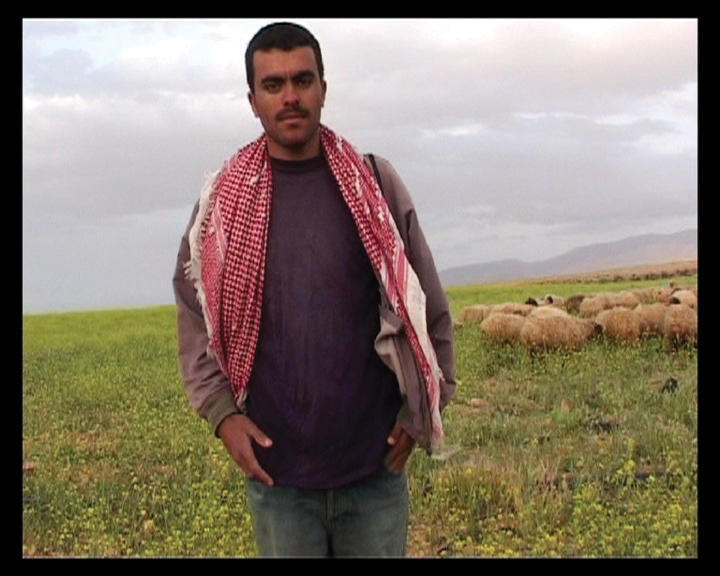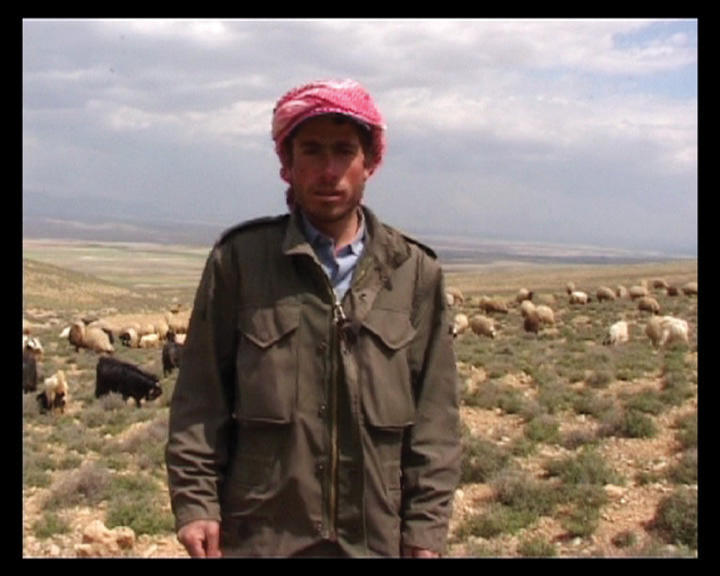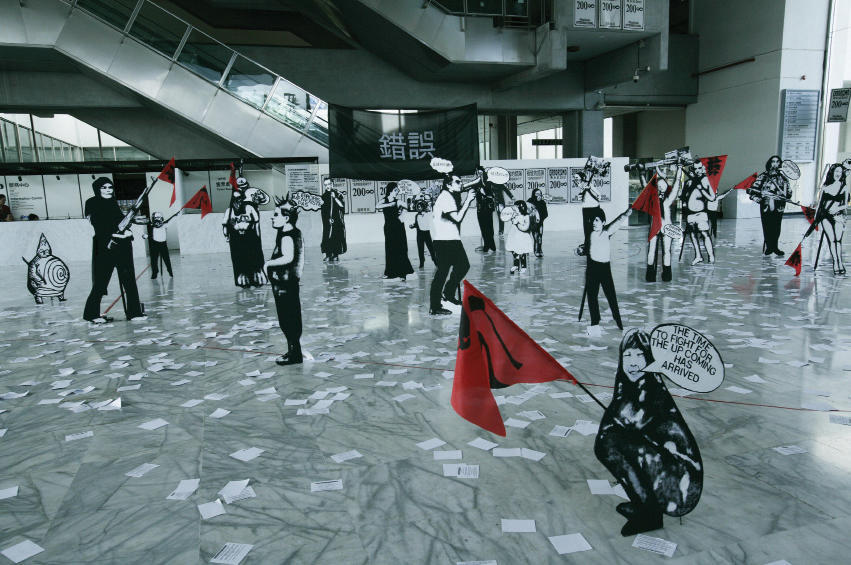
Taipei
Taipei Biennial
September 13, 2008–January 4, 2009
The opening of the 2008 Taipei Biennial coincided with international bank collapses, global stock market crashes, and the threat of Typhoon Sinlaku. So when curators Manray Hsu and Vasif Kortun described the biennial as a “community situation” and a “democratic process” exploring neoliberalism, globalization, and environmental disaster, they articulated some astonishingly timely concepts. The inauguration inspired an appropriately communal response to the curators’ ambitions.
Though the atmosphere could have been paranoid or pessimistic, the artworks spoke in optimistic terms, suggesting strategies of self-organization, DIY intervention, and anti-capitalist activism. And while the curatorial approach could have appeared fetishistic or naive, the exhibition worked, due in part to the fact that so many of the pieces — such as Lara Almárcegui’s successful procurement of a pledge to conserve an uninhabited island in Taipei’s Danshui River; IRWIN’s Neue Slowenische State, a state only in the territory of time, to which anyone can apply for citizenship and receive a passport; Superflex’s ongoing Free Beer project, in which the beverage is accompanied by an open-source recipe and branding rights available for anyone to use — were already conceived to challenge opinions and models considered acceptable in the public domain. So while other large-scale, politically orientated exhibitions — Documenta 7, the 2007 Istanbul Biennial, and the 2007 Venice Biennale — have lately taken a classical documentary approach, Taipei 08 did not shirk the responsibility of literal intervention or the danger of appearing dewy-eyed in intent. It was motivated more by potential answers than by questions, and the works were not only more immediate but also actively involved in the issues at hand. They offered proposals of hope with attitude, irony, and even humor.

The exhibition was divided into three sections. The first part consisted primarily of commissioned works that referred specifically to local situations in Taipei. Among several references to migrant labor was Mario Rizzi’s film Chicken Soup, part documentary, part enacted observation, which traced the lives of two foreign women who arrived in Taiwan as bought brides. The women’s individual accounts were shocking; at the same time, they were narrated with unsettling acceptance. Between scenes, Rizzi flashed contradictory statements from the US State Department and Taiwanese dating agencies, pinning blame on authoritarian structures rather than on processes of individual disempowerment.
The second section proposed strategies of self-organization. Christodoulos Panayiotou’s slide installation Wonder Land explored a Disney Carnival staged in Limassol, Cyprus. A slide projector showed photographs found in the municipal archives of Limassol that were taken at different renditions of this annual event. The carnival condition, which should be a cause for celebration and liberation, was treated by Panayiotou as a sign of global cultural hegemony displacing local post-colonial history. In Roderick Buchanan’s I Am Here, footage of two marching bands from Glasgow, one republican and one loyalist, was shown on either side of a dividing wall (neither band would agree to participate if they were to be shown in a film together), and a pendulum edit ensured that their music never overlapped. By means of a similar dichotomy of space, Yochai Avrahami focused on two sites located between Jerusalem and Ramallah. Video filmed at the site and taken from satellite imagery was projected three hundred sixty degrees in a circular construction that resembled a well. The necessity of looking down on Avrahami’s footage positioned the audience as both tourist and spy.
The third section bristled with humor, thanks to Ziad Antar’s Tokyo Tonight, a video that playfully confused time, place, and extremely divergent economies. Shot in the arid landscape of northern Lebanon, the video showed a succession of farmers who approached the camera and simply stated the name “Tokyo.” Their script bore no relation to their context or activity, so that “Tokyo” became a reference to something both instantly recognizable and at the same time unreachable, a metaphor for much more than the city itself. Anetta Mona Chisa and Lucia Tkacova’s video of a provocative bedroom conversation, in which they rated various world leaders, all of them male, purely in terms of sexual aplomb, teetered on hilarious satire but was at the same time overly populist in its tabloid-style use of advertising language.
During the biennial, Oliver Ressler invited curatorial responses to the anti-neoliberalism theme by way of a symposium held under the heading “A World Where Many Worlds Fit.” Here, the momentum of inspiring propositions and exhibitions as democratic exercises flagged. The works presented were not diverse enough, and it was here that the Biennial’s dearth of artists and projects from Asia was severely apparent (during the symposium, there were none). The mainly documentary-based presentations of past actions also contributed to setting a tone like that of a members-only club. The one relevant question seemed to be: “Can such activist activity be disseminated by non-artistic practice?”

The differentiation, if there is one, between art and action, as well as the potential end of neoliberalism and the return to the local and the regional, fuelled a second, internal debate, which was entertained in a hotel lobby thanks to Sinlaku. The conversation also turned the notion of “democratic luxury” — a concept proposed by the late Hüseyin Alptekin that curators Manray and Kortun quoted in their opening gamut — inside out. Can the development of the biennial and its international criteria, which ultimately stems from the growth of a globally networked economy, now be read as a luxury taken too far? The opening days of Taipei 08 hosted a tight-knit group of artists who clearly experienced a democratic engagement with an exhibition. That, in and of itself, inspires hope that maybe art can change the world. The possibility to participate in the experience and to share in the communal dynamic was a luxury indeed.